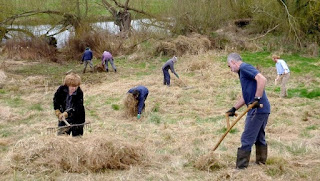 Many thanks to Dave Morris, County Recorder for Oxfordshire, who sent us this guest blogpost:
Many thanks to Dave Morris, County Recorder for Oxfordshire, who sent us this guest blogpost:
"Oxfordshire (V.C. 23 and part V.C. 22) now has
its own State of Nature report, published by the charity Wild Oxfordshire,
available here. Launched at Blenheim Palace on Tuesday, the report, like its
national counterpart, provides a review of the conservation status of the
county’s habitats and species. It draws on the expertise of the many
conservation, natural history and biological recording organisations in the
county (222 apparently), including our two botanical groups, the Oxfordshire
and Wychwood Flora Groups.
"I confess to not having read the national
State of Nature reports, probably because the headlines which seem so very
obvious and depressing to a naturalist are all that penetrate the media.
However, the Oxfordshire State of Nature report is remarkably positive. Of
course, there are the familiar losses and declines, and these are clearly
emphasised, but what comes through is how rich in wildlife the county remains.
 |
Fritillary Fritillaria meleagris
Image: J.A. Webb
|
 |
| Carrying out practical conservation work for Blysmus compressus. Dave Morris (far right); Judy (foreground left). Image: J.A. Webb |
"All this work shows that local people can see the ‘bigger picture’
of wildlife and society – in these uncertain political times let’s hope that
the State of Nature in Oxfordshire report will catch the imagination of
government too".
Thanks Dave - great to hear some good news about people working together to help our wild plants! Congratulations to all of you on the publication of this report.
No comments:
Post a Comment
Please leave a comment!